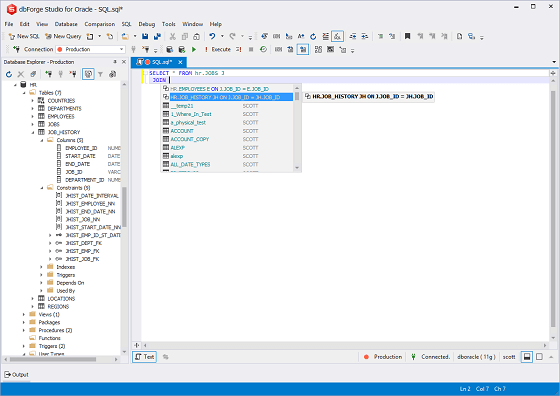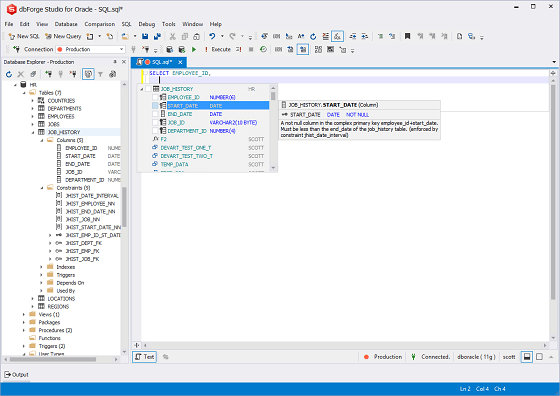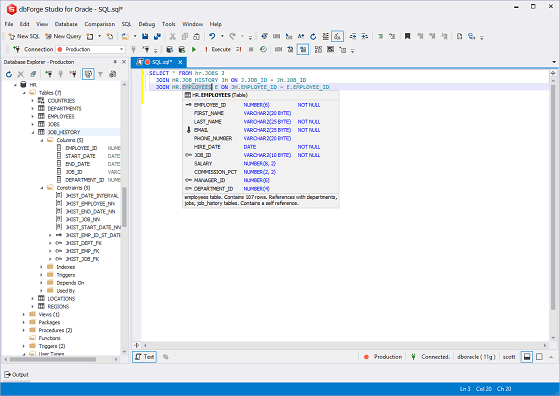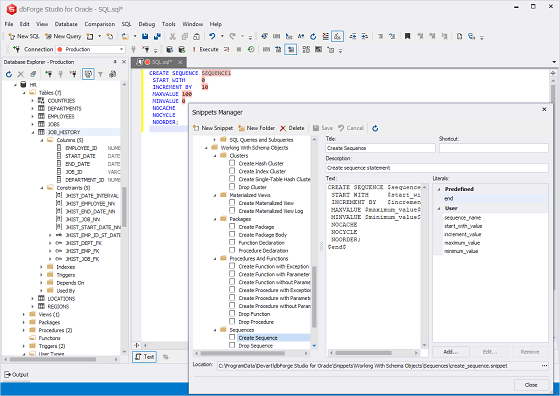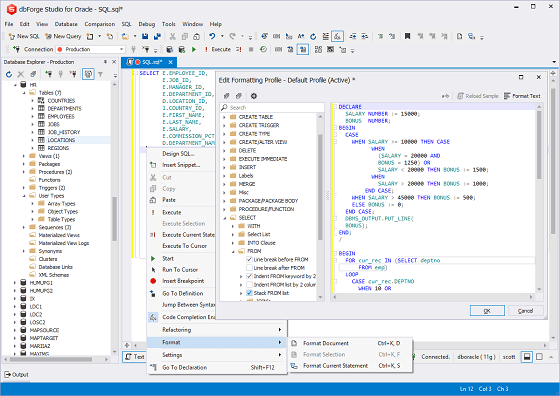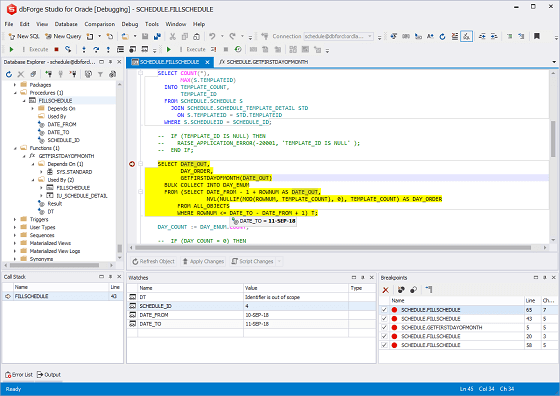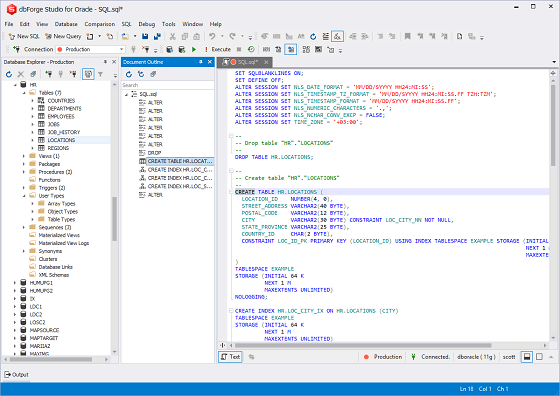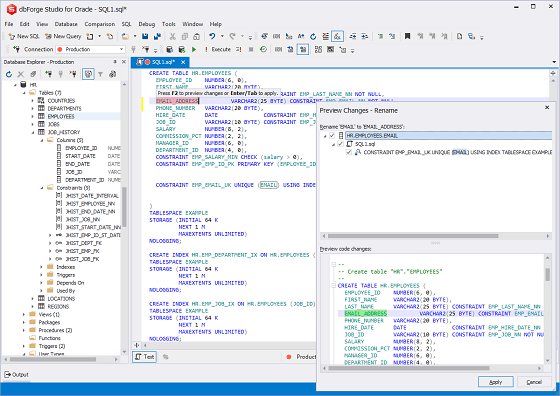PL/SQL Developer Tools - PL/SQL Formatter, Code Completion, Code Snippets
Performance of any PL/SQL developer depends not only on their knowledge and skills, since development environment used to implement tasks is of great importance too. Getting familiar with dbForge Studio for Oracle is a pleasure owing to, first of all, its extended means in terms of work with the PL/SQL code. However, the functionality of this tool is not limited only to convenient work with PL/SQL. Let's consider the tool's features step by step.
